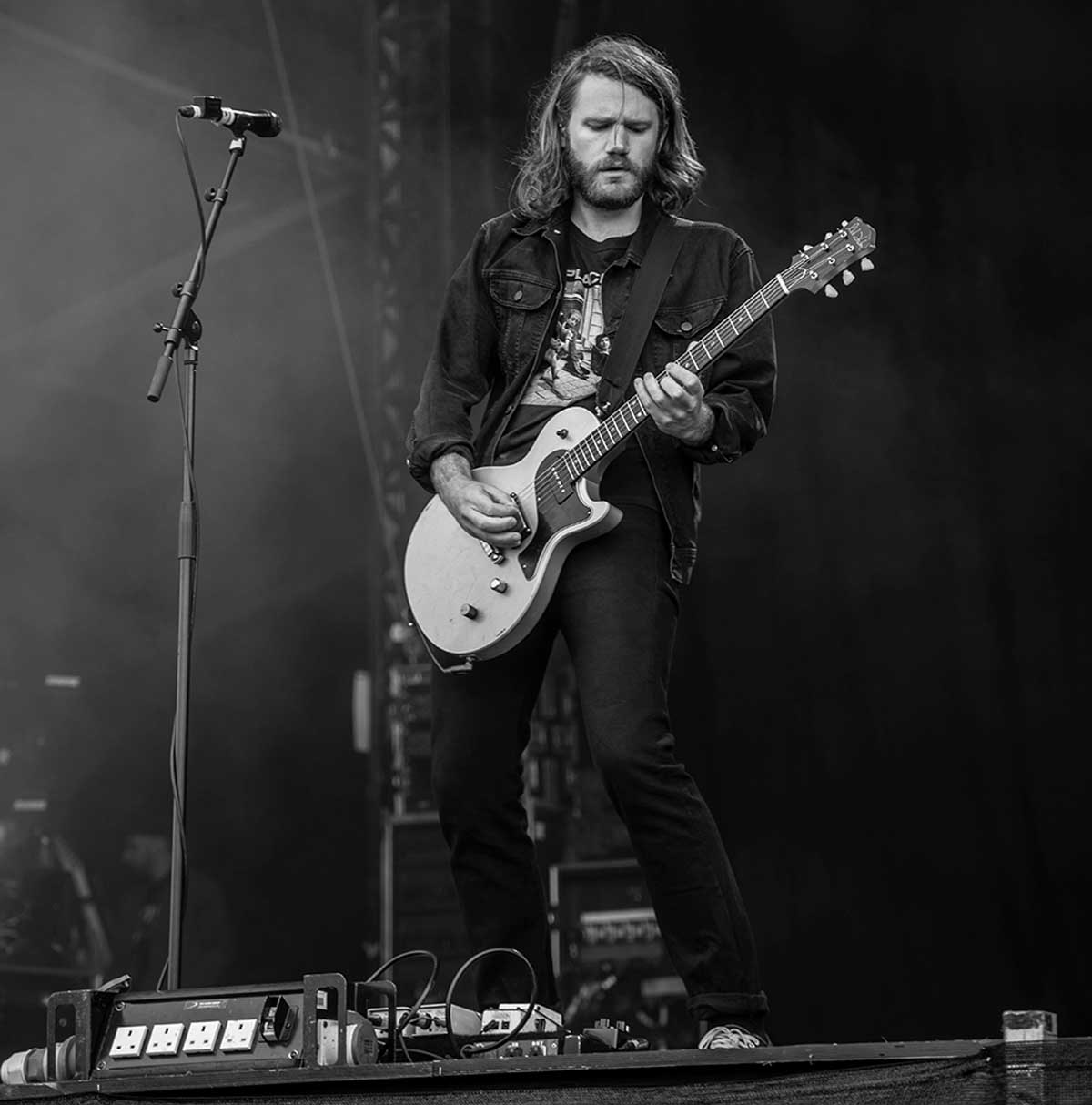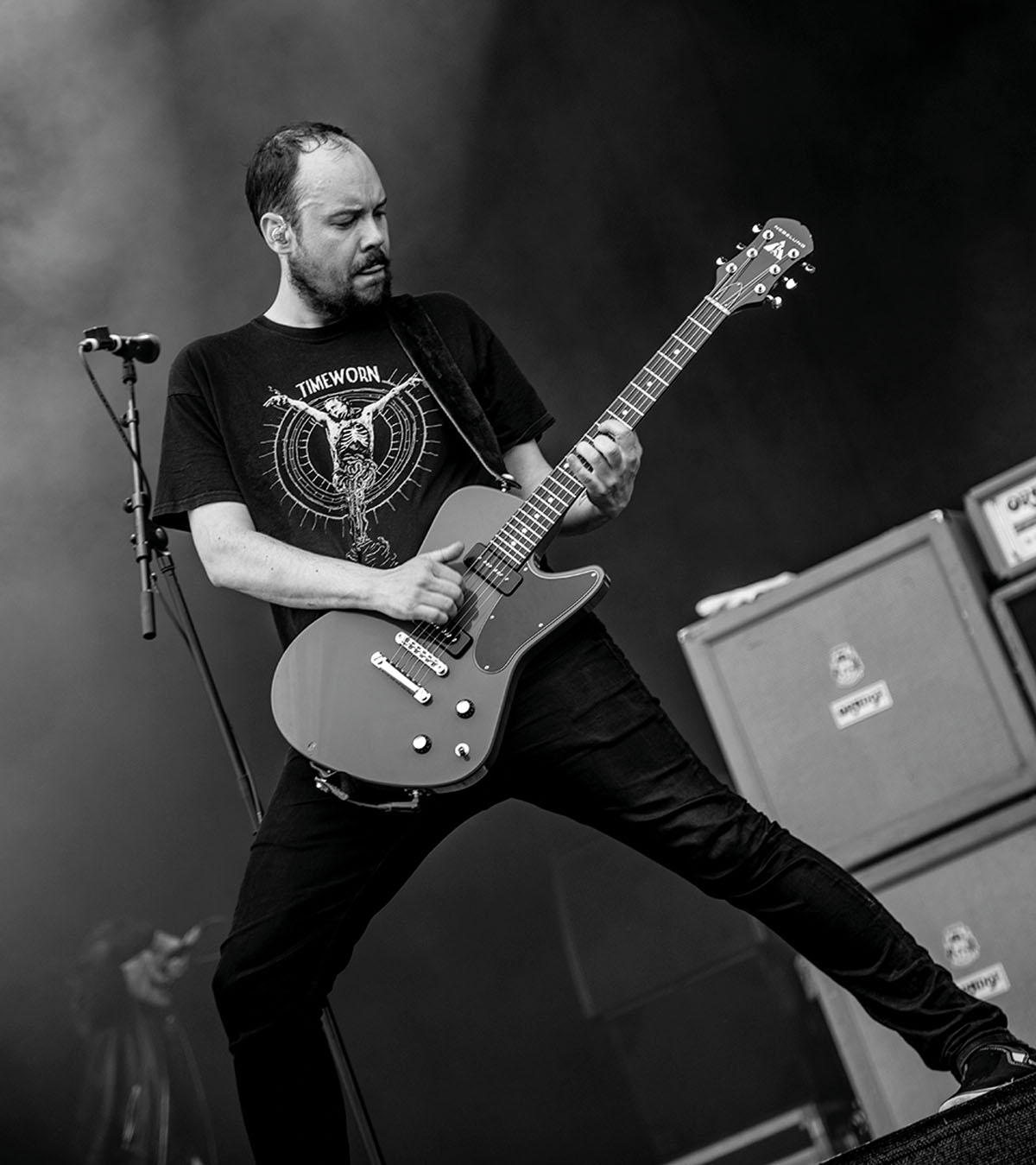Kvelertak: “We weren’t supposed to be a metal band when we started”
Guitarists Bjarte Lund Rolland and Vidar Landa on the joys of simple guitar rigs, the influence of Fleetwood Mac, and how they expanded their sound on new album, Splid

From the time they formed in Stavanger, Norway, in 2007, Kvelertak have widely been regarded as a proggy black-and-roll band. But while the band’s three guitarists all enjoy heavy music, they didn’t start out as metalheads.
Primary songwriter Bjarte Lund Rolland considers Fleetwood Mac’s Lindsey Buckingham and Dire Straits’ Mark Knopfler to be two of his greatest influences. Rhythm guitarist Vidar Landa was more a fan of alternative and indie rock and lead guitarist Maciek Ofstad grew up with hardcore before discovering extreme metal.
“We weren’t supposed to be a metal band when we started,” Rolland says over the phone. “We wanted to be more like a rock band that has metal influences here and there. Of course, we all like Metallica and grew up in Norway with the whole black metal thing. But there’s so much other stuff that we like that has influenced us.”
Kvelertak’s penchant for classic rock and mainstream metal were evident in the past – mostly between buzzsaw riffs and roaring vocals. Their euphoric energy separated them from many of their peers, earning them ringing endorsements from various acts, including Converge, Mastodon (whose bassist, Troy Sanders, guests on Kvelertak’s new album, Splid), Ghost and, most significantly, Metallica.
Kvelertak connected with the latter through Baroness frontman and painter John Baizley, who designed Kvelertak’s first two album covers and whose band shares Metallica’s management company, Q Prime.
“We had no idea Metallica knew who we were,” Landa says. Then in 2013, we played Slim’s in San Francisco on our first headline tour of the States. I looked out in the crowd and saw James Hetfield headbanging! We talked to him after the show and he said he was super-stoked about the band, which seemed crazy.
“Then, a year later, Metallica invited us to play four summer shows with them. Nothing like that had ever happened to us. That went well, and then a couple years later they asked us to play the Wired tour with them in Europe.”
Get The Pick Newsletter
All the latest guitar news, interviews, lessons, reviews, deals and more, direct to your inbox!
Metallica likely appreciated and related to the complex rhythm shifts, effortless genre-splicing and enticing melodies on 2016’s Nattesferd. With Splid, Kvelertak have brought even more diversity to their galvanic songs.
The first single, Crack of Doom, features a doomy rhythm, galactic hooks and – for the first time – tuneful vocals; Uglas Hegemoni is a self-aggrandizing anthem with Iron Maiden-ish guitar harmonies. Even when Kvelertak dabble in conventional metal subgenres, their desire to expand beyond the parameters of their influences makes Splid special.

One of the highlights of the album is Fanden Ta Dette Hull, a blend of driving hard rock, alternative and thrash. The main riff is redolent of AC/DC, but as the song progresses it sounds more like a hybrid of Foo Fighters and Queen. Then, without warning, it blasts into a midsection reminiscent of Master of Puppets-era Metallica.
“It’s cool how that whole song came together and ended up,” recalls Landa. “The first time we did the part that’s like Queen, I thought it was almost a joke. And then Bjarte showed us the rest and we did all three guitar harmonies with the other AC/DC references.
“Suddenly, the parts worked really well together and the song took off. And, one day when we were in the rehearsal room someone went, ‘Well, what if we stick a thrash part in there and turn it totally around?’ When an idea like that comes up, we’ll try it and sometimes it works.”
Unlike Nattesferd, which was well-rehearsed and mostly recorded live in the studio with producer Nick Terry, Splid was assembled piecemeal and tracked over three highly productive weeks (the most time the band has spent in the studio) with producer Kurt Ballou, who also worked on the band’s first two albums.
For all the lightning-in-a-bottle moments on Splid, Kvelertak shrug off the idea that they made a concerted effort to up their game when they entered the rehearsal room in 2019 to write new songs.
“We didn’t consciously try out to do anything especially different than what we did on Nattesferd,” Landa says. “We had classic-rock moments on that and some blast beats, and those are on the new record as well.
“I guess we sort of had an intention to make this one a little bit more in-your-face and a little more energetic, so maybe that’s how we built the songs. But some of the riffs on the record have been around for a really long time and we just pulled them out when we needed them.”
“I guess there’s more diversity in there because it’s fun to make all kinds of different stuff and to do something new,” Rolland adds. “It’s never fun just to repeat yourself, and maybe the limitations I imposed on myself when I wrote shaped the music.”
Kvelertak’s three-guitar lineup is just as significant to their sound as the composition of the songs.
I’m definitely influenced by Lindsey Buckingham and I also kind of appropriated a Peter Green fingerpicking style – kind of folky and bluegrass
Bjarte Lund Rolland
Rolland plays Norwegian-made Nebelung guitars – including his signature model, the single-coiled P90-equipped Riffmeister – through an Orange Rockerverb 100. He sets the amp to a creamy tone to separate himself from the more abrasive humbucker pickup sounds of his bandmates.
Just as significantly, Rolland strums with his fingers instead of a pick and fingerpicks in a style modeled after two influential Fleetwood Mac guitarists.
“I’m definitely influenced by Lindsey Buckingham and I also kind of appropriated a Peter Green fingerpicking style – kind of folky and bluegrass, playing those kinds of polished shapes,” he tells us. “It is harder to play upstroking parts without a pick, but I can play the chuggy stuff and tremolo, as well as any of the melodic leads.”

Landa plays Orange Thunderverb 200 amps through a Les Paul Junior-shaped Krautster II by Germany’s Nik Huber Guitars. “Nik came to one of our shows when we played Germany, and I tried out one of his guitars at our soundcheck just for the hell of it,” he says. “I liked it so much it became my main guitar. It just has a tone control and volume knob, and that simplicity works really well for me.”
Usually, Landa rolls back the gain for a heavy, but not too fuzzy rhythm guitar sound. However, Ofstad boosts the gain to make his shreddy leads pop. To blend in with his bandmates, he plays an Orange Rockerverb 100 and switches off between Gibsons (Flying V and Les Paul) and Fenders (Stratocaster and Telecaster).
Through extensive trial and error, the folk behind Kvelertak have learned how to combine three disparate guitar passages in a way that compliment the compositions rather than muddying them.
What makes Splid more diverse than Kvelertak’s earlier albums, however, has more to do with a major shakeup that could have torn the band apart. Shortly after finishing a European tour with Metallica, original vocalist Erlend Hjelvik abruptly left the band, telling his bandmates he was bored and burned out from too much touring.
At first, Kvelertak were unsure if they wanted to continue without Hjelvik, but they unanimously decided that if they could find a suitable vocalist they would keep going. Immediately, they reached out to their friend Ivar Nikolaisen, who had performed in the relatively popular Norwegian band Silver and guested on the song Blodtørst from Kvelartek’s self-titled 2010 debut.
“Ivar was the first and only person we asked,” Landa says. “If he had said no then maybe we would still have stayed together, but it would have been a big setback and maybe we would have lost faith in what we were doing.“
It was inconceivable to think that anyone could fill Erlend’s shoes because he was such a character, so we had to find someone who could expand our creative possibilities
Bjarte Lund Rolland
“It was too good to be true,” Rolland adds. “It was inconceivable to think that anyone could fill Erlend’s shoes because he was such a character, so we had to find someone who could expand our creative possibilities, and Ivar is perfect for that.”
Presented with a new vocalist who could growl like a death-metal vocalist, shout like a punk and sing in a melodic voice, Rolland broadened his songwriting palate to complement Nikolaisen’s multifaceted delivery. That’s why Splid blends more punk, hard rock and stoner metal elements into the band’s songs.
“It really feels like it was meant to be,” concludes Landa. “Having Ivar join us put a new spark into the band. His excitement was very contagious, and that makes us a better band.”
Jon is an author, journalist, and podcaster who recently wrote and hosted the first 12-episode season of the acclaimed Backstaged: The Devil in Metal, an exclusive from Diversion Podcasts/iHeart. He is also the primary author of the popular Louder Than Hell: The Definitive Oral History of Metal and the sole author of Raising Hell: Backstage Tales From the Lives of Metal Legends. In addition, he co-wrote I'm the Man: The Story of That Guy From Anthrax (with Scott Ian), Ministry: The Lost Gospels According to Al Jourgensen (with Al Jourgensen), and My Riot: Agnostic Front, Grit, Guts & Glory (with Roger Miret). Wiederhorn has worked on staff as an associate editor for Rolling Stone, Executive Editor of Guitar Magazine, and senior writer for MTV News. His work has also appeared in Spin, Entertainment Weekly, Yahoo.com, Revolver, Inked, Loudwire.com and other publications and websites.
“The rest of the world didn't know that the world's greatest guitarist was playing a weekend gig at this place in Chelmsford”: The Aristocrats' Bryan Beller recalls the moment he met Guthrie Govan and formed a new kind of supergroup
“We hadn’t really rehearsed. As we were walking to the stage, he said, ‘Hang on, boys!’ And he went in the corner and vomited”: Assembled on 24 hours' notice, this John Lennon-led, motley crew supergroup marked the beginning of the end of the Beatles



![[from left] George Harrison with his Gretsch Country Gentleman, Norman Harris of Norman's Rare Guitars holds a gold-top Les Paul, John Fogerty with his legendary 1969 Rickenbacker](https://cdn.mos.cms.futurecdn.net/TuH3nuhn9etqjdn5sy4ntW.jpg)







